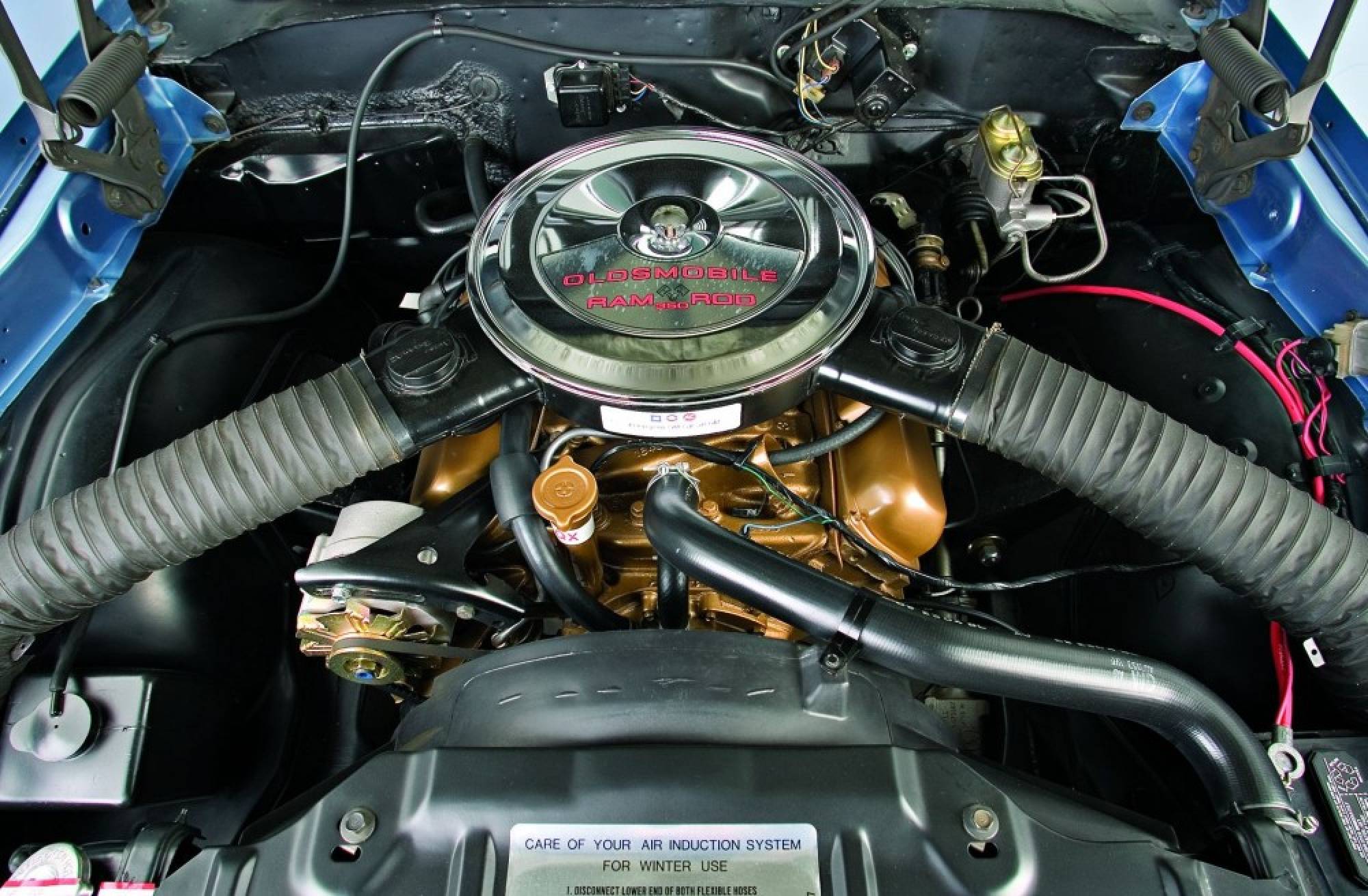
Oldsmobile's W-31 350
An aggressive cam, ram-air induction made the Ram Rod run

Feature Article from Hemmings Motor News
October, 2010 -
Terry McGean
It must have seemed at
least somewhat odd--Oldsmobile, the division heralded for big cars with big,
torque-rich engines, offering a hotted-up small-block. High-performance
small-blocks were best suited to smaller, lighter cars, like pony cars and
compacts...which Oldsmobile wasn't offering in 1968. The smallest Olds models at
that time were the intermediate F-85 and Cutlass, and they'd bulked up beyond
their svelte dimensions of a few years prior. Nonetheless, 1968 saw the first of
Oldsmobile's W-31-option small-block engines, offered under the Ram-Rod 350
moniker. The W-31 was built to make power the way other high-performance
small-cube V-8s did: with high-flow induction, aggressive camshaft timing and
RPM. The '68 Ram Rod 350 was rated at 325hp and used the same cylinder-head
castings as regular 350 engines that year, with a "5" casting number, though
fitted with larger 2.00/1.625-inch valves from the 455. The camshaft featured
308 degrees duration, making for a choppy idle that mandated manual brakes due
to the resulting low idle vacuum; manual transmission, either a three- or
four-speed, was also mandatory. One of the unique W-31 pieces is the harmonic
balancer, which is larger and thicker than the standard 350 piece, perhaps to
better cope with the junior W's higher RPM capability.
The W-31 was offered on
F-85 Club Coupe, Cutlass Supreme coupe and standard Cutlass coupe for 1968, and
brought ram-air induction scoops mounted beneath the front bumper, feeding large
tubes that passed through the fenderwells to reach the dual-snorkel air cleaner.
Just 742 examples of W-31-powered Oldsmobiles were built that first year.
For 1969, the W-31 option
was largely the same, though the Ram Rod 350 decals were gone from the fenders,
replaced by small "W-31" decals near the marker lights. The ram-air air cleaner
lid still carried the Ram Rod name, and beneath it was essentially the same
hardware. The biggest change was the availability of an automatic transmission,
which was a specially calibrated version of GM's new Turbo Hydra-Matic 350.
Production climbed slightly to 913 copies, including 26 Cutlass convertibles,
which had previously been unavailable with the W-31.
The final year of the
little W-machine brought more changes, some that made W-31-equipped cars easier
to spot. That was mostly due to the new inclusion of the "OAI" hood (Outside Air
Induction), as seen on the '70 4-4-2 with W-30 option. The W-31 also got the
same striping as the W-30, and similar die-cast emblems for the fenders. The
engine remained mostly the same as the previous two years, though there was a
new aluminum intake manifold with "W-350" cast ahead of the carburetor pad, and
the cylinder heads carried a "6" casting number. The convertible was gone from
the lineup, but Olds still managed to sell a few more W-31s for '70: 1,352
total.
Still, the W-31 was
simply not a popular choice in the days before serious concerns over fuel
economy, emissions output and insurance premiums; the option was quietly snuffed
after 1970, which ironically, was right about the time it might have begun to
make more sense.
This article originally
appeared in the October, 2010 issue of Hemmings Motor News.